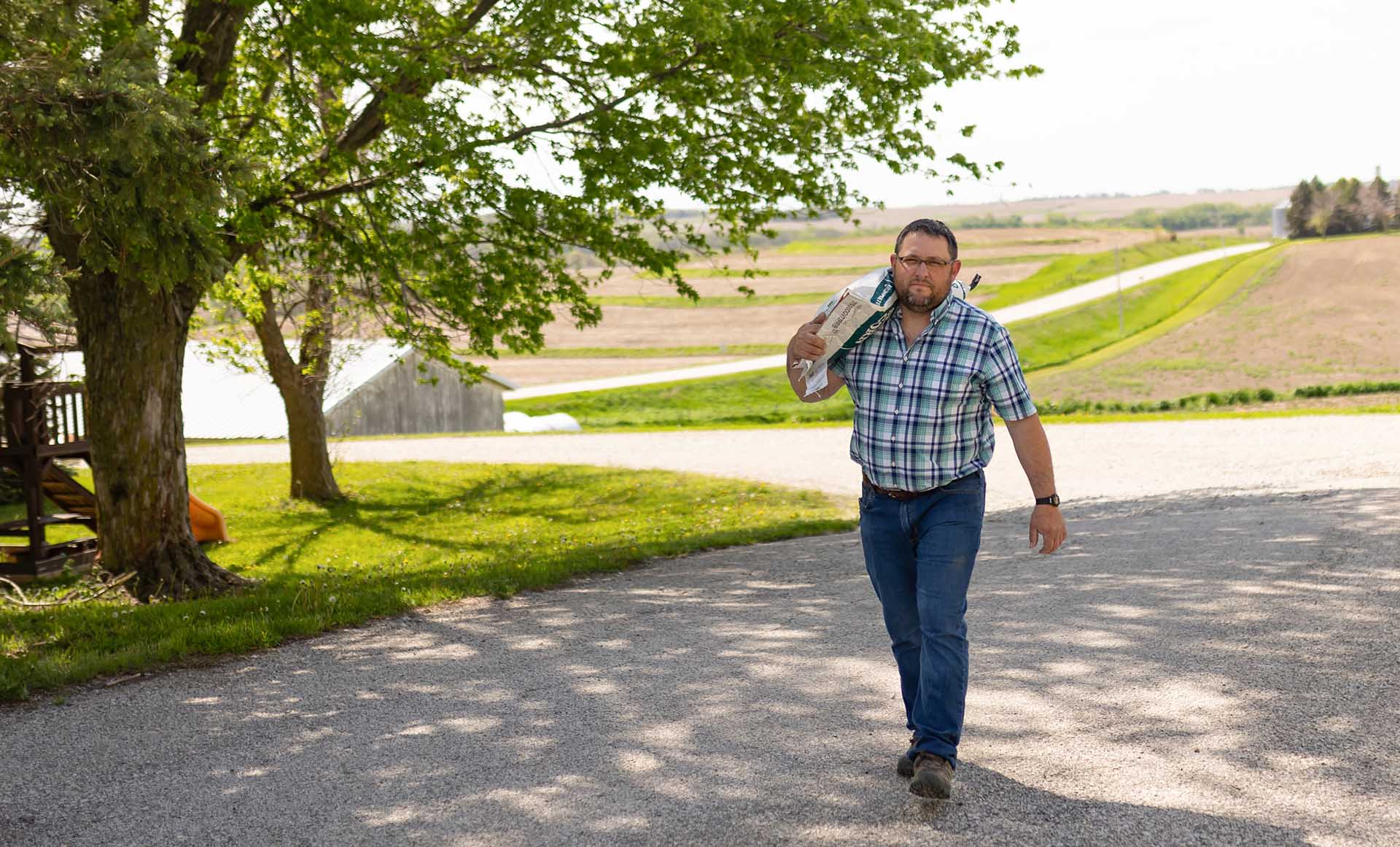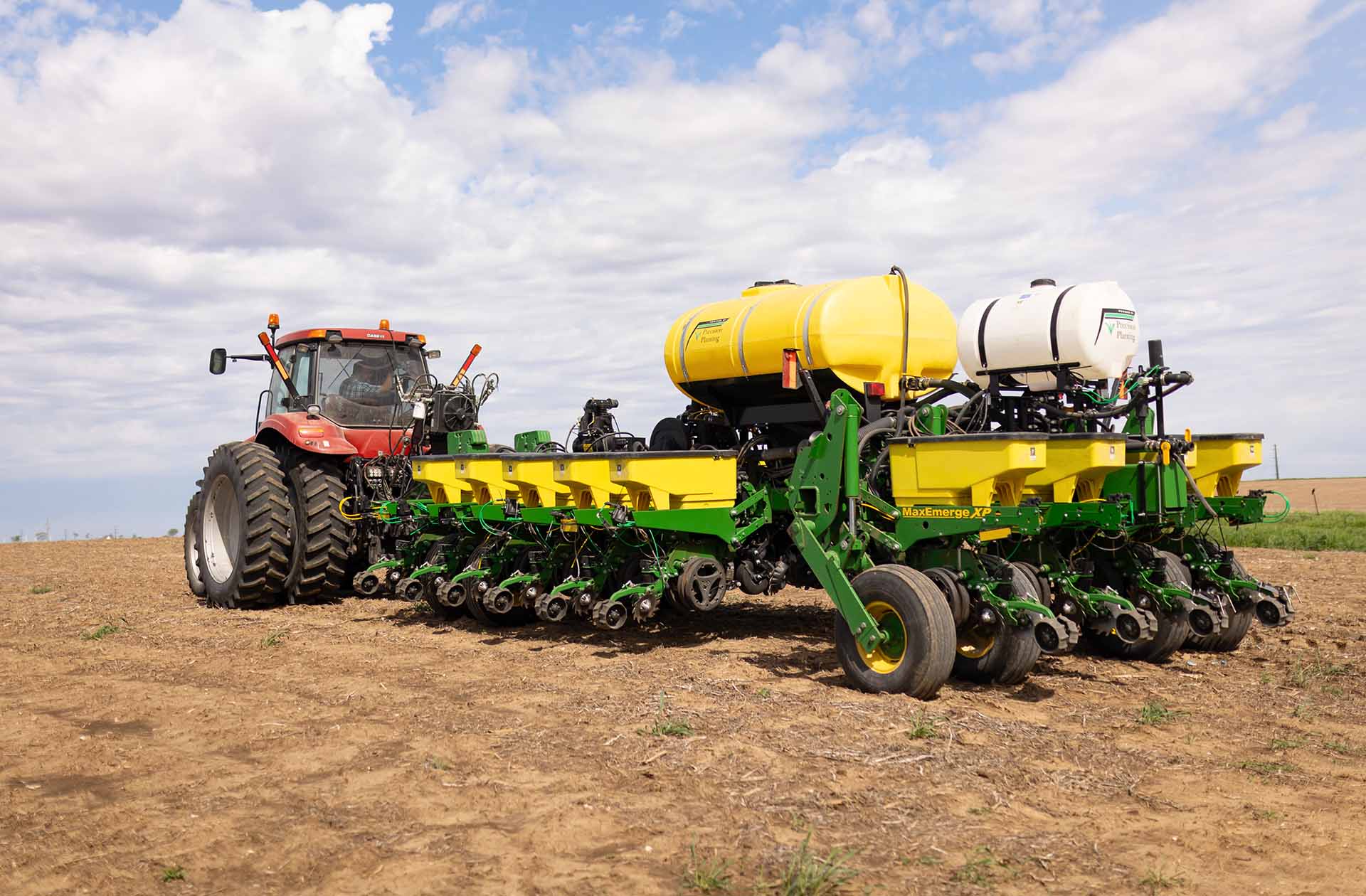
(Photo: Iowa Soybean Association / Joclyn Bushman)
Research outcomes drive decisions
June 28, 2024 | Kriss Nelson
Brian Fager, a farmer and precision equipment dealer, is constantly engaged in conversations about how he and his customers can improve their farming operations.
Striving to become a better farmer and provide his customers a better service, the Cass County farmer from Atlantic tests equipment and methods to refine the best resources available.
Fager does this by working with the Iowa Soybean Association’s (ISA) Research Center for Farming Innovation (RCFI) on seed population trials.
“We have ignored seed population for a long time,” says Fager. “We must dive deeper into understanding the number of seeds required per bushel of yield. Do we understand the economic threshold and the genetic potential of our seeds?”
In 2023, Fager, with the assistance of ISA Research Agronomist Drew Clemmensen, implemented a replicated strip trial using soybean seed population rates of 80,000, 110,000, 140,000 and 170,000 seeds per acre on 30-inch row spacings.
“With Brian’s knowledge of precision software, we worked together to lay out and write a prescription for the soybean seeding rate trial,” says Clemmensen. “He is very engaged in learning through replicated strip trial research managed on his acres.”
Fager says he was surprised with the results.

“If you had viewed satellite maps and determined yield based on how the soybeans looked, I would have thought the heavier population seeded soybeans would yield better,” he says. “But the 110,000 seeds-per-acre rate was the winner in this trial.”
Fager acted on those results for the 2024 growing season.
“I adjusted my populations down, definitely put more in the ground at 110,000 than I ever have before, and estimate that I am saving $5,000 in seed this year,” he says. “I have been averaging 130,000 seeds per acre, gradually reducing populations from 160,000 the last five years.”
Fager is replicating what he learned from last year’s seeding rate trial to a trial this year.
He is conducting a seed population trial using 15-inch row planter spacings and incorporating different yield environments on his farms, evaluating populations across a more diverse landscape.
“Although more research needs to happen, I think it is safe to say we are all overplanting by 5 to 10 percent,” says Fager. “I think we can continue to push lower as soybean genetics change, but I need to see year-over-year results.”
Fager says he will continue his partnership with RCFI in seed population rate trials and looks forward to exploring research on fertility and conducting replicated trials in that specific area.
“I want to learn more about fertility and how we can maximize our yield potential while minimizing our inputs,” he says.
Research for real results
RCFI works alongside ISA’s research and conservation agronomists, farmers and other researchers to understand and share results, enabling farmers to advance toward their productivity, profitability and sustainability goals.
“We conduct research to determine whether a specific method or product can be implemented on a farm to enhance farmers’ productivity,” says Alexander Litvin, Ph.D., ISA’s research agronomy lead. “Since every farm is unique, management practices also differ. It’s important to optimize your fields to achieve the highest possible returns on investment. You may be overlooking something that can significantly benefit you.”
RCFI research helps farmers be more productive while also being better stewards of the environment; RCFI focuses on research that can have an impact.
“We need to determine whether a project will lead to conservation implementation, demonstrate the value of sustainable and more conservative practices, improve nutrient management inputs, or fall into better crop management,” Litvin says.
Another path is identifying the top-of-mind issues affecting farmers.
“By finding answers to these questions, we can move the needle forward and have a significant impact,” says Litvin. “The objective is to identify the area with the largest impact we can make today.”
Have an on-farm trial you want to try on your own farm? RCFI can help.
“We receive trials submitted by farmers, but sometimes their ideas do not align with our current or future projects,” says Litvin. “In those cases, our research agronomists assist them in designing a plot that is easy to analyze.”
In addition, research agronomists help analyze the data and provide a report afterward.
“I appreciate farmers being proactive and curious, trying out new things, and exposing themselves to various opportunities and ways of thinking,” says Litvin. “This can be a significant advantage for their progress and improvement.”
If you are interested in participating in an on-farm trial, contact Alex Litvin at alitvin@iasoybeans.com or by visiting iasoybeans.com/research.
Back